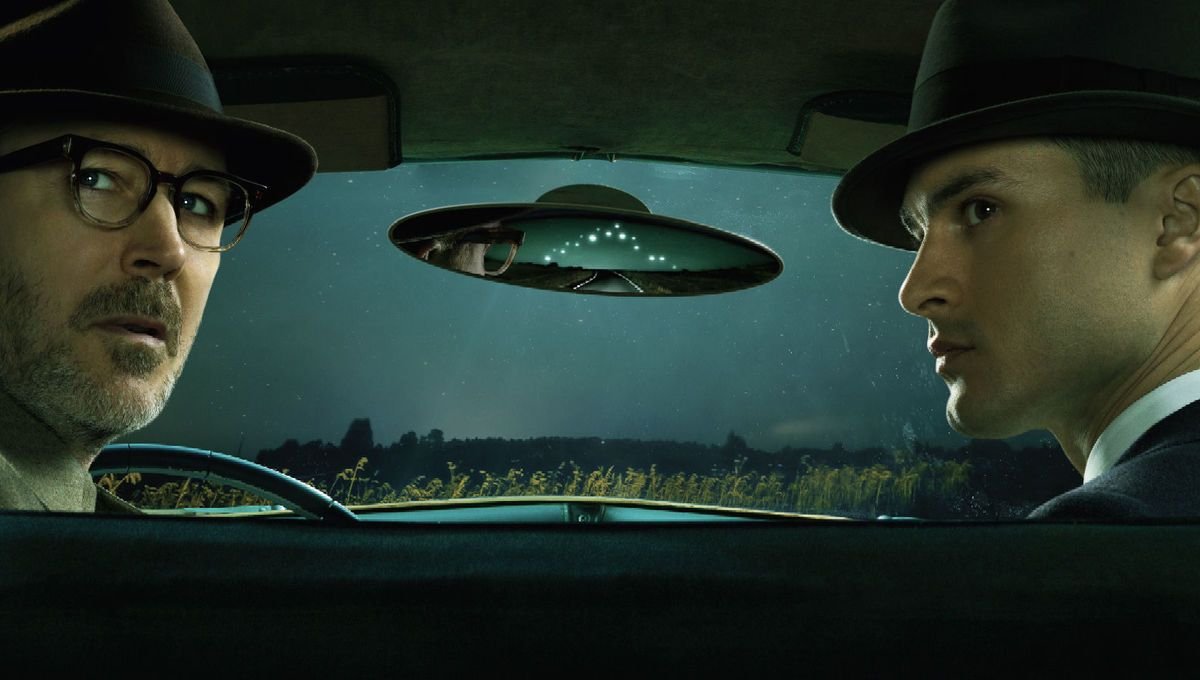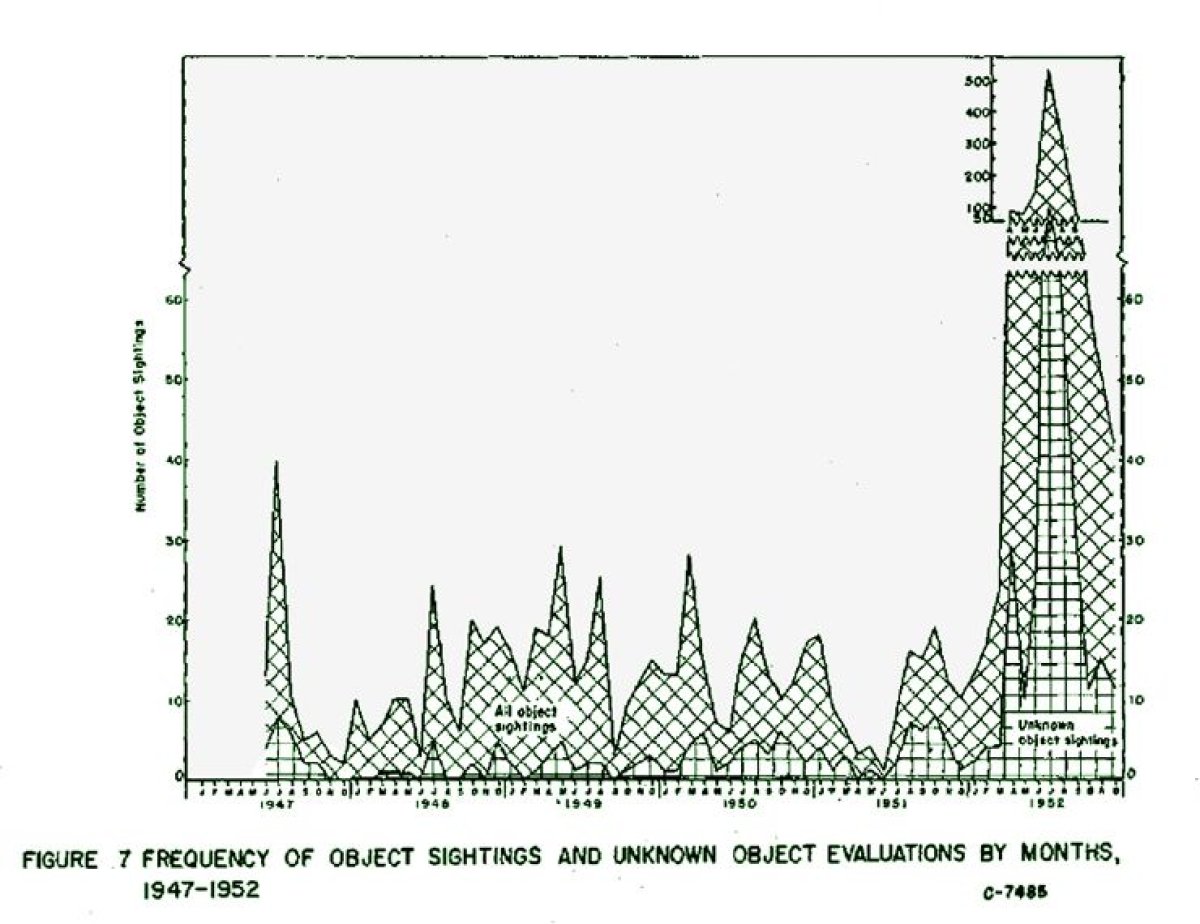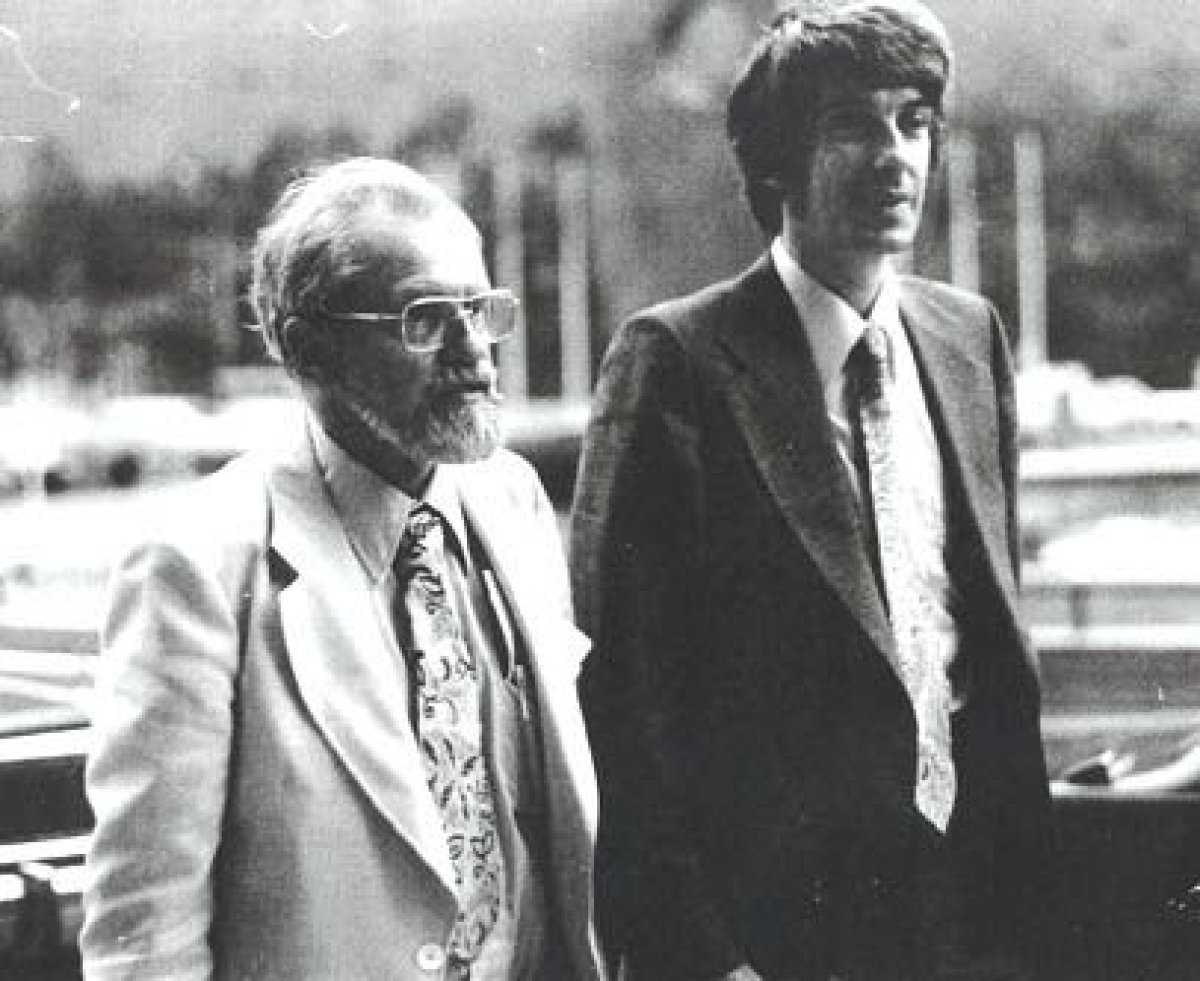Josef Allen Hynek, typically abbreviated to J. Allen Hynek, was an American astronomer who, beginning in the 1950s, became one of the leading experts on what the United States Air Force had designated "Unidentified Flying Objects" or UFOBs (later shortened to "UFOs"). Hynek was instrumental to the military's most famous study of the phenomena, Project Blue Book, now the basis for a History Channel series of the same name.

The Origins of Project Blue Book
Before Project Blue Book, there was Project Sign, prompted by a rash of UFO sightings in 1947, including what's come to be considered the first major sighting of the modern era, when pilot Kenneth Arnold spotted nine objects flying in formation over Mt. Rainier in Washington state, which he calculated were traveling three times faster than any known manned aircraft. The idea of aliens visiting in "flying saucers" came from Arnold's description of the objects in flight. "They flew erratic, like a saucer if you skip it across the water," he told the East Oregonian.
A little more than a week after Arnold's sighting, an Army Air Force (just weeks away from becoming its own branch of the military) spokesman told The New York Times that no secret weapon could account for the sightings, further dismissing Arnold's encounter as unworthy of further study. But, simultaneously, the Air Force announced the creation of just such a study, setting up Project Sign under the authority of Captain Robert Sneider at Wright Patterson Air Force Base in Ohio. Hynek, at the time a professor at the Ohio State University, was brought on as a scientific consultant.
"In the spring of 1948, I was teaching astronomy at Ohio State University, in Columbus. One day, three men, and they weren't dressed in black, came over to see me from Wright Patterson Air Force Base in nearby Dayton," Hynek told the Computer UFO Network (CUFON), a year before his death in 1986. "They started out by talking about the weather, as I remember, and this and that, and then finally one of them asked me what I thought about flying saucers. I told them I thought they were a lot of junk and nonsense and that seemed to please them, so they got down to business. They said they needed some astronomical consultation because it was their job to find out what these flying saucer stories were all about."
Sneider and other members of the Air Force were divided on possible explanations for the year's wave of sightings —853 of which were documented by newspapers across the United States and Canada after Arnold's story garnered national coverage—but the extraterrestrial hypothesis was considered from the very beginning.
In 1948, Project Sign reportedly submitted its "Estimate of the Situation" to the Air Force, which endorsed the extraterrestrial hypothesis as the most likely explanation for a number of sightings, including a glowing object seen by two commercial pilots over Alabama. Though its existence was confirmed by Hynek and Project Blue Book Director Captain Edward J. Ruppelt, the "Estimate of the Situation" has never been declassified or released. It is considered one of the holy grails of Ufology.
Project Sign was followed by Project Grudge in 1949, which went over many of the same cases as Project Sign, this time without the extraterrestrial hypothesis in play. As with Sign, Hynek served Grudge in a largely skeptical role, which concluded in its final report that the majority of UFO sightings could be explained by "misinterpretation of conventional objects," hoaxers, the mentally ill, and "mass hysteria or 'war nerves.'" The only direct threat they saw to the United States was the "planned release of unusual aerial objects coupled with the release of related psychological propaganda" causing mass hysteria.
Project Grudge still found that 23 percent of the 244 sightings investigated could not be explained, but concluded "there are sufficient psychological explanations for the reports of unidentified flying objects to provide plausible explanations for reports otherwise not explainable." Project Grudge closed the book on Air Force research into UFOs for three years, until Project Blue Book began in 1952.
Project Blue Book Reality and Termination
Beginning in 1952, Project Blue Book investigated 12,618 sightings, dating back to the origins of Project Sign in 1947. 701 of those sightings remain unidentified, according to the Air Force.

Like Sign and Grudge, Blue Book was headquartered at Wright-Patterson Air Force Base. "Periodically, it is erroneously stated that the remains of extraterrestrial visitors are or have been stored at Wright-Patterson AFB," the Air Force wrote in 1985 in a "Fact Sheet" released about Project Blue Book, addressing rumors that bodies from the Roswell Incident crash had been transported to Ohio. "There are not now nor ever have been, any extraterrestrial visitors or equipment on Wright-Patterson Air Force Base."
Throughout its 17 years of investigation, Project Blue Book went through changes to both its mission and leadership. The most consequential was the aftermath of the CIA's Robertson Panel in 1953, which was staffed by famous scientists, including Nobel Prize winner Luis Alvarez (Hynek was an associate member). The panel dismissed Project Blue Book's work as unscientific, further suggesting "that the continued emphasis on the reporting of these phenomena does, in these parlous times, result in a threat to the orderly functioning of the protective organs of the body politic," including "the cultivation of a morbid national psychology."
It was a major blow to Project Blue Book, which now operated under increased scrutiny from the Air Force, which began to prefer dismissing UFO cases using any criteria possible. Some of its explanations have since become infamous, including several sightings in the summer of 1985 backed by radar tracking, which Blue Book concluded were the result of multiple eyewitnesses mistaking bright stars for the reported large aerial objects. In 1966, just before Hynek would pivot away from debunking UFOs, he attributed sightings made by hundreds of witnesses over the course of two days in Michigan to swamp gas.
"I was a thorough skeptic, and I'm afraid I helped to engender the idea that it must be nonsense, therefore it is nonsense," Hynek told Omni magazine in 1985.
Upon the project's termination in December 1969, the Air Force concluded that none of the unidentified UFO sightings represented technology beyond "present-day scientific knowledge" or "extraterrestrial vehicles." Despite the Air Force concluding "there is no likelihood the Air Force will become involved with the UFO investigation again" in the wake of Project Blue Book, recent revelations have shown that the Pentagon resumed research in 2007, allocating $22 million to the Advanced Aerospace Threat Identification Program for research into ongoing military sightings of unexplained aerial phenomena.
J. Allen Hynek: From Skeptic to UFO Believer
But while Project Blue Book concluded the UFO phenomena had mundane explanations, Hynek—played by Aidan Gillen (Game of Thrones, The Wire) in the History Channel Project Blue Book series—came to the opposite conclusion over the course of his work on the project, abandoning his earlier skepticism. Hynek explained this transition to CUFON as beginning with the "completely negative and unyielding attitude" of the Air Force, coupled with the "caliber of the witnesses," including military pilots, which lead him to conclude "well, maybe there was something to all this."
By 1968, Hynek had already voiced criticism of Project Blue Book's turn away from serious investigation, describing the project as more concerned with PR than research. One of his colleagues dubbed Project Blue Book the "Society for the Explanation of the Uninvestigated." After Blue Book was disbanded, Hynek became one of the most vocal proponents of UFO research.
In 1972, Hynek published The UFO Experience: A Scientific Inquiry, which became most famous for his classification system for sightings:
- Nocturnal Lights
- Daylight Discs
- Radar-Visual
- Close Encounters of the First Kind - sighting a UFO less than 500 feet away
- Close Encounters of the Second Kind - a UFO that has a physical effect, such as scorching the ground or burning witnesses
- Close Encounters of the Third Kind - UFO encounters with an "animated creature" present

He also laid out his criteria for what constitutes a worthwhile UFO report:
"A statement by a person or persons judged responsible and psychologically normal by commonly accepted standard, describing a personal, visual, or instrumentally aided perception of an object or light in the sky or on the ground and/or its assumed physical effects, that does not specify any known physical event, object, or process or any psychological event or process."
Later in his life, Hynek worked to expand the conceptual space around UFOs, becoming an early proponent of extradimensional intelligence (EDI) explanations for UFO phenomena alongside Ufologist Jacques Vallee, with whom he co-authored 1975's The Edge of Reality: A Progress Report on the Unidentified Flying Objects.

Hynek came to believe that the UFO phenomena was unlikely to be explained by "nuts and bolts" spacecraft, instead hypothesizing what he called "M&M" ("material and mental") technologies.
"I hold it entirely possible that a technology exists which encompasses both the physical and the psychic, the material and the mental," Hynek told the First International UFO Congress in Chicago in 1977. "The psychic realms, so mysterious to us today, may be an ordinary part of an advanced technology."
Project Blue Book TV Show on the History Channel
In the History Channel series Project Blue Book, Hynek teams up with Air Force officer Captain Michael Quinn (Michael Malarkey) to investigate major sightings—one per episode, much like The X-Files. Highly fictionalized, the new series also has Hynek slowly uncovering a government conspiracy working in the background of Project Blue Book.
While many Project Blue Book documents can be found online, the complete collection of declassified material can be researched at the National Archives in Washington, D.C., a collection that includes "37 cubic feet of case files" (about 74,000 pages) related to individual sightings, 94 rolls of microfilm, plus photographs, sound recordings and motion picture film.
Project Blue Book airs Tuesdays on the History Channel.
Uncommon Knowledge
Newsweek is committed to challenging conventional wisdom and finding connections in the search for common ground.
Newsweek is committed to challenging conventional wisdom and finding connections in the search for common ground.
About the writer
To read how Newsweek uses AI as a newsroom tool, Click here.








